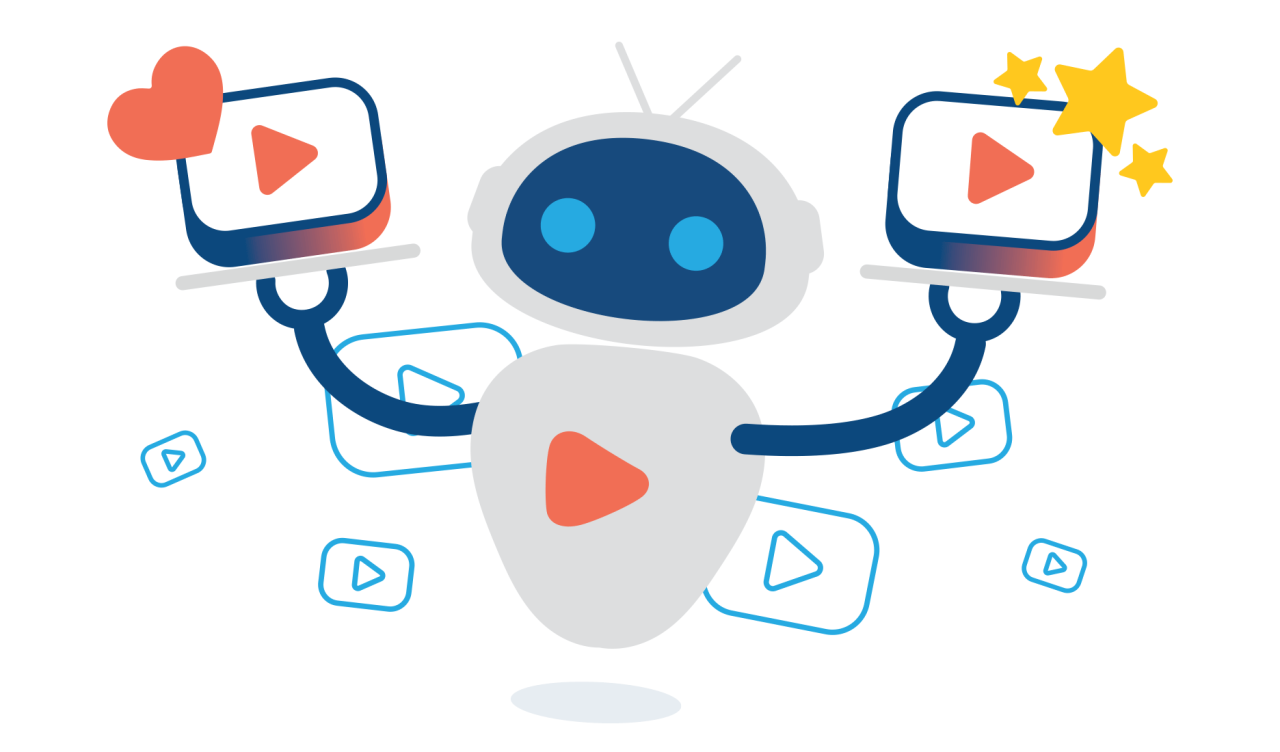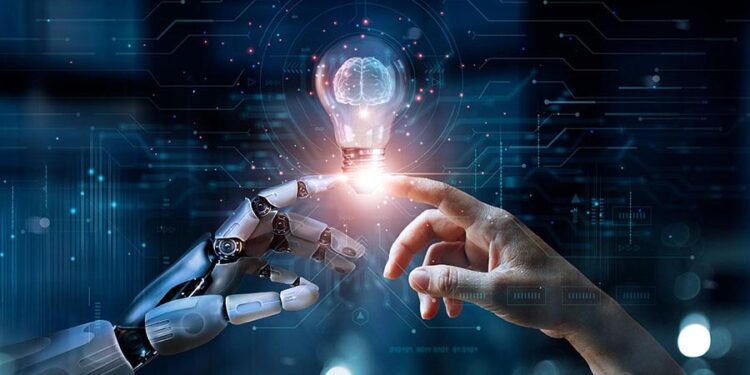The rapid acceleration of Artificial Intelligence (AI) is not merely a technological advancement; it’s a societal paradigm shift, and its most profound impacts are already being felt by young minds across the globe. For children and adolescents today, AI isn’t a futuristic concept but an increasingly integrated part of their daily lives, influencing everything from their education and entertainment to how they perceive information and interact with the world. Understanding how AI is shaping these developing minds – its myriad opportunities and potential pitfalls – is paramount as we navigate this new frontier. It requires a holistic perspective that acknowledges both the transformative power of AI as a tool for learning and innovation, and the crucial need to prepare young people for a future intrinsically intertwined with intelligent machines.
Growing Up with Intelligent Machines

Unlike previous generations, today’s youth are digital natives who are also AI natives. They are encountering AI not as a novelty, but as an embedded feature in the apps they use, the games they play, and the educational tools they interact with. This seamless integration means AI is influencing their cognitive development, their problem-solving approaches, and their understanding of the world from a very early age.
A. The Pervasiveness of AI in Daily Life
AI algorithms are already operating in the background of countless applications and services that young people regularly use.
- Personalized Learning Platforms: Educational apps and online learning systems often use AI to adapt content, quizzes, and learning paths to individual student needs and progress, providing a personalized experience.
- Entertainment Algorithms: Streaming services (Netflix, Spotify, YouTube, TikTok) utilize AI to recommend content based on viewing/listening history, shaping tastes and exposure to new media.
- Gaming Experiences: AI powers non-player characters (NPCs) in video games, optimizes game difficulty, and can even generate game environments, creating more immersive and dynamic play.
- Smart Devices and Virtual Assistants: Voice assistants like Siri, Google Assistant, and Alexa, and smart home devices, powered by AI, are becoming common household fixtures, influencing how children interact with technology.
- Social Media Feeds: AI algorithms curate social media feeds, deciding what content young users see based on their engagement patterns, influencing their worldview and exposure to information.
- Generative AI Tools: The rise of generative AI, such as ChatGPT, Midjourney, and other text-to-image or text-to-video tools, means young people can directly interact with AI to create content, write essays, and even generate code, fundamentally changing creative and learning processes.
B. Cognitive and Behavioral Adaptation
Constant exposure to AI is subtly, yet profoundly, shaping young minds in distinct ways.
- Intuitive Interaction: Growing up with AI means young people often develop an intuitive understanding of how these systems work, even without explicit instruction. They quickly learn to optimize their prompts for AI assistants or adapt to algorithmic recommendations.
- Problem-Solving Shifts: AI can act as a powerful problem-solving partner. Young minds are learning to leverage AI for research, idea generation, and even complex calculations, potentially altering traditional critical thinking pathways. The challenge is to ensure AI augments, rather than replaces, core cognitive skills.
- Expectation of Personalization: Because AI-powered services often deliver highly personalized experiences, young people may come to expect this level of customization in all their interactions, potentially impacting their patience with less adaptive systems or human interactions.
- Ethical Nuance Development: As they interact with AI, young people are implicitly and explicitly encountering ethical dilemmas related to data privacy, algorithmic bias, and the nature of intelligence, fostering an early need for ethical reasoning in a digital context.
AI as an Enabler for Young Minds
When harnessed responsibly, AI presents unprecedented opportunities to enhance learning, foster creativity, and empower young people in their development.
A. Revolutionizing Education and Learning
AI has the potential to transform educational paradigms, making learning more accessible, personalized, and engaging.
- Hyper-Personalized Learning Paths: AI can analyze a student’s strengths, weaknesses, learning style, and pace, then tailor curricula and resources accordingly. This allows for truly individualized education, something traditional classrooms struggle to provide.A. Adaptive Tutoring Systems: AI tutors can provide immediate feedback, identify misconceptions, and offer targeted interventions, akin to having a personal mentor available 24/7.B. Content Customization: AI can generate practice problems, summarize complex texts, or even translate materials into different languages, making learning resources more accessible.
- Enhanced Accessibility: AI-powered tools can assist students with learning disabilities, visual impairments, or other challenges, providing real-time captions, text-to-speech functionality, or alternative input methods, fostering greater inclusivity in education.
- Fostering Curiosity and Exploration: AI can help young people explore complex topics by generating simulated environments, providing interactive data visualizations, or acting as a knowledge base, encouraging deeper dives into subjects of interest.
- Automating Repetitive Tasks: For educators, AI can automate grading of objective assessments, administrative tasks, and even generate preliminary lesson plans, freeing up teachers to focus on individualized instruction and deeper engagement with students.
B. Igniting Creativity and Innovation
AI tools are becoming powerful co-creators, enabling young people to express themselves and innovate in entirely new ways.
- Generative Art and Music: AI art generators (like Midjourney or DALL-E) and music composition tools allow young people with nascent creative ideas to bring them to life without extensive technical skills, fostering experimentation and exploration.
- Storytelling and Writing Assistants: AI writing tools can help brainstorm ideas, refine prose, or even generate initial drafts, empowering young writers to overcome writer’s block and focus on narrative development. This can be particularly beneficial for those struggling with written expression.
- Code Generation and Debugging: For young aspiring programmers, AI can generate code snippets, explain complex functions, or help debug errors, making coding more accessible and less daunting, accelerating their learning curve.
- New Forms of Entertainment: AI can personalize game narratives, create unique characters, or generate dynamic environments, paving the way for entirely new interactive entertainment experiences designed by and for young people.
C. Developing Future-Ready Skills
Navigating an AI-driven world requires a new set of competencies, and engaging with AI now helps young minds develop these crucial skills.
- Prompt Engineering: Understanding how to effectively communicate with AI systems (e.g., crafting precise prompts) is a rapidly emerging and valuable skill that young users are naturally developing.
- Critical Evaluation of AI Output: Learning to discern reliable AI-generated content from biased or incorrect information, and understanding the limitations of AI, is essential for digital literacy.
- Ethical AI Literacy: Engaging with AI inevitably raises questions about data privacy, algorithmic bias, and responsible AI use. This fosters early ethical reasoning and discussions about the societal implications of technology.
- Human-AI Collaboration: Young people are learning to work alongside AI as a partner, understanding how to leverage AI’s strengths (e.g., data processing) to augment their own human capabilities (e.g., creativity, critical thinking).
Challenges to the AI Frontier with Care

While the opportunities are vast, the pervasive impact of AI on young minds also presents significant challenges that demand thoughtful consideration and proactive mitigation strategies.
A. Cognitive and Developmental Risks
The reliance on AI could potentially impact the development of core cognitive skills if not managed thoughtfully.
- Over-reliance and Skill Atrophy: Excessive dependence on AI for tasks like problem-solving, writing, or critical analysis could potentially hinder the development of fundamental cognitive skills, such as independent critical thinking, analytical reasoning, and complex problem-solving without AI assistance.
- Diminished Creativity and Originality: While AI can spark creativity, an over-reliance on generative AI might lead to less original thought or a tendency to produce generic, AI-like content, stifling unique human expression.
- Information Overload and Filter Bubbles: AI algorithms, designed for personalization, can create “filter bubbles” or “echo chambers” where young people are only exposed to information that reinforces their existing beliefs, limiting exposure to diverse perspectives and potentially fostering polarization.
- Impact on Attention Span: AI-driven content recommendations and highly personalized feeds are designed to maximize engagement, potentially contributing to shorter attention spans and difficulty with sustained focus on less stimulating, complex tasks.
B. Ethical and Societal Concerns
The integration of AI raises a host of ethical questions, particularly concerning privacy, bias, and the future of work.
- Data Privacy and Surveillance: AI systems require vast amounts of data. Children’s interactions with AI-powered toys, educational apps, and smart devices could lead to extensive data collection, raising significant privacy concerns and the potential for surveillance.
- Algorithmic Bias and Discrimination: AI systems are trained on existing data, which often reflects societal biases. If young people primarily interact with biased AI, it could perpetuate stereotypes or lead to discriminatory outcomes in areas like education, career recommendations, or even social interactions.
- Misinformation and Deepfakes: Generative AI makes it easier to create highly realistic fake images, videos, and audio (deepfakes), making it increasingly difficult for young minds to discern truth from falsehood, undermining trust in digital information.
- Job Displacement Fears: While AI creates new jobs, it will undoubtedly automate others, leading to anxieties about future employment opportunities for today’s youth if they are not equipped with adaptive skills.
- Reinforcement of Harmful Stereotypes: If AI-powered content or recommendations are not carefully curated, they can reinforce harmful gender, racial, or other stereotypes present in their training data.
C. Safety and Well-being Issues
The pervasive nature of AI also brings new dimensions to online safety and overall well-being.
- Addiction and Compulsive Use: AI-driven personalization and recommendation engines are incredibly effective at keeping users engaged, potentially contributing to addictive behaviors and compulsive screen time.
- Cyberbullying and Harassment (AI-Enhanced): AI could potentially be misused to automate or enhance cyberbullying, for instance, through automated harassing messages or creating targeted deepfakes.
- Emotional Development: Over-reliance on AI for social interaction (e.g., AI chatbots) might hinder the development of complex human emotional intelligence, empathy, and social cues.
- Unsupervised AI Interaction: Without proper guidance, young people might interact with AI systems in ways that expose them to inappropriate content or lead to harmful decision-making if they treat AI as an infallible authority.
Preparing Young Minds for an AI-Driven Future
Navigating the complex landscape of AI requires a concerted effort from parents, educators, policymakers, and the tech industry. The goal is not to shield young minds from AI, but to empower them to understand, utilize, and critically engage with it responsibly.
A. Reimagining Education for the AI Age
Educational systems must adapt rapidly to prepare students for a world where AI is ubiquitous.
- Integrating AI Literacy:A. What AI Is and Isn’t: Teach fundamental concepts of AI, how it works (e.g., machine learning, algorithms), and its capabilities and limitations. Demystify the technology.B. Ethical AI Principles: Incorporate discussions on AI ethics, bias, privacy, and the societal implications of AI into the curriculum. Foster critical thinking about AI’s role in society.
C. Human-AI Collaboration Skills: Train students on how to effectively use AI tools as assistants, collaborators, and research aids, emphasizing the augmentation of human capabilities.
- Prioritizing Core Human Skills: While AI handles routine tasks, education must double down on uniquely human skills that AI struggles with, such as:A. Critical Thinking and Problem-Solving: Emphasize complex problem-solving that requires nuanced understanding, lateral thinking, and ethical consideration, not just computational solutions.B. Creativity and Originality: Encourage divergent thinking, artistic expression, and innovative problem-solving that goes beyond AI-generated suggestions.
C. Emotional Intelligence and Empathy: Develop interpersonal skills, communication, collaboration, and the ability to understand and respond to human emotions.
D. Adaptability and Resilience: Foster a growth mindset that embraces continuous learning and adapts to rapid technological change.
- Project-Based Learning: Implement more project-based learning that requires students to apply knowledge in real-world contexts, often leveraging AI tools as part of the process, but with a focus on human ingenuity.
B. Guiding Parents and Guardians
Parents are crucial in mediating young people’s interaction with AI and fostering healthy digital habits.
- Learn About AI Together: Parents should educate themselves about AI and engage in conversations with their children about the AI they encounter in apps, games, and devices.
- Foster Critical Engagement: Encourage children to question AI’s suggestions, understand why an AI might recommend something, and be aware of potential biases or limitations.
- Set Healthy Boundaries: Just like with general screen time, establish rules for AI tool use, ensuring it doesn’t displace essential human interactions, creative play, or physical activity.
- Prioritize Human Connection: Actively promote and facilitate face-to-face social interactions, outdoor play, and activities that build empathy and real-world social skills.
- Protect Privacy: Understand privacy settings on AI-powered devices and apps, and teach children about the importance of not oversharing personal information.
C. Industry Responsibility and Ethical AI Development
The developers of AI technologies have a profound ethical responsibility, especially when designing tools for young users.
- “Safety by Design”: Integrate ethical considerations, privacy protections, and bias mitigation from the very outset of AI development, particularly for products aimed at children.
- Transparency and Explainability: Strive to make AI systems more transparent, so users (and parents) can understand how decisions or recommendations are made.
- Child-Centric AI: Develop AI tools specifically designed for the developmental stage of children, with appropriate content filtering, age verification, and responsible engagement mechanisms.
- Invest in Bias Mitigation: Actively work to identify and reduce algorithmic bias in training data and AI models to ensure fair and equitable outcomes for all users.
- Collaboration with Experts: Engage with child psychologists, educators, and ethicists to understand the developmental impacts of AI and design beneficial technologies.
D. Policy and Regulatory Frameworks
Governments and international bodies have a role in establishing frameworks that ensure the responsible development and deployment of AI for young people.
- Data Privacy Laws: Enact and enforce robust data privacy regulations (like GDPR and CCPA) specifically tailored to protect children’s data in AI environments.
- AI Ethics Guidelines: Develop and promote national and international guidelines for ethical AI development and use, particularly concerning vulnerable populations.
- Funding for Research: Invest in interdisciplinary research to better understand the long-term cognitive, social, and emotional impacts of AI on child development.
- Educational Investment: Support schools and educators in developing and implementing AI literacy curricula and training for teachers.
Conclusion
The impact of AI on young minds is one of the most significant narratives of our time. It represents both an exhilarating frontier of innovation and a landscape fraught with potential challenges. Today’s youth are not just living in an AI-powered world; they are actively shaping it, adapting to its nuances, and learning to harness its capabilities.
By embracing a proactive and collaborative approach – through responsive education, mindful parenting, responsible industry practices, and robust policy frameworks – we can ensure that AI becomes a powerful force for good in the lives of young people. The goal is to cultivate a generation that is not merely proficient with AI, but also deeply thoughtful about AI; a generation that can leverage intelligent machines to solve complex problems, unleash unprecedented creativity, and build a more equitable and innovative future for all. The intelligent future is not just arriving; it’s being designed by the choices we make today for our young minds.as





Discussion about this post